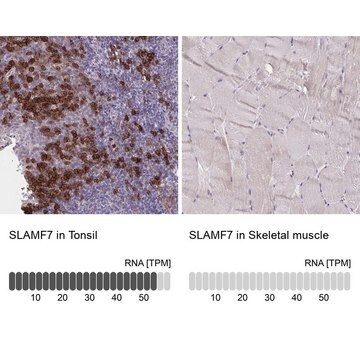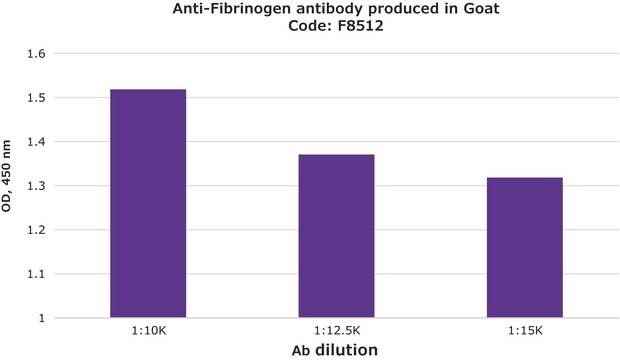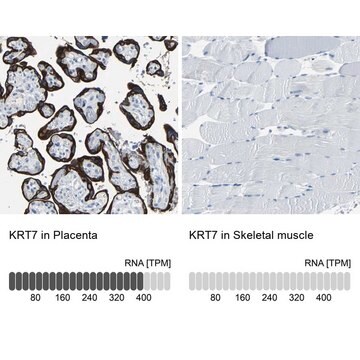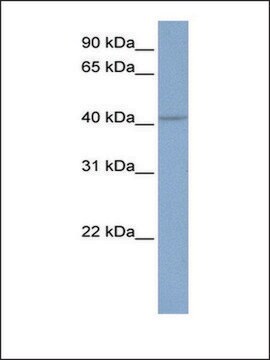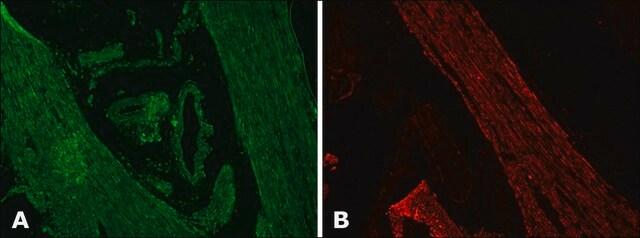MABF2093
Anti-SLAMF7 (CD319) Antibody, clone 162
clone 162, from mouse
Sinonimo/i:
SLAM family member 7, CD2 subset 1, CD2-like receptor-activating cytotoxic cells, CRACC, Membrane protein FOAP-12, Novel Ly9, Protein 19A, CD319
About This Item
IHC
IP
inhibition assay
immunohistochemistry: suitable (paraffin)
immunoprecipitation (IP): suitable
inhibition assay: suitable
Prodotti consigliati
Origine biologica
mouse
Forma dell’anticorpo
purified immunoglobulin
Tipo di anticorpo
primary antibodies
Clone
162, monoclonal
Reattività contro le specie
human
Confezionamento
antibody small pack of 25 μg
tecniche
flow cytometry: suitable
immunohistochemistry: suitable (paraffin)
immunoprecipitation (IP): suitable
inhibition assay: suitable
Isotipo
IgG2bκ
N° accesso NCBI
N° accesso UniProt
modifica post-traduzionali bersaglio
unmodified
Informazioni sul gene
human ... SLAMF7(57823)
Descrizione generale
Specificità
Immunogeno
Applicazioni
Flow Cytometry Analysis: A representative lot detected SLAMF7 (CD319) in Flow Cytometry applications (Bouchon, A., et. al. (2001). J Immunol. 167(10):5517-21).
Affects Function Analysis: A representative lot stimulated SLAMF7, which resulted in an increase SHIP-1 tyrosine phosphorylation in OPM2 and MM1S cells expressing EGFR-CD45. (Guo, H., et. al. (2015). Mol Cell Biol. 35(1):41-51).
Inhibition Analysis: A representative lot blocked the augmented capacity of human blood-derived macrophages to engulf Raji cells in response to anti-CD47 antibodies. (Chen, J., et. al. (2017). Nature. 544(7651):493-497).
Immunoprecipitation Analysis: A representative lot immunoprecipitated SLAMF7 (CD319) in Immunopreciptation applications (Bouchon, A., et. al. (2001). J Immunol. 167(10):5517-21; Tassi, I., et. al. (2005). J Immunol. 175(12):7996-8002).
Inflammation & Immunology
Qualità
Immunohistochemistry (Paraffin) Analysis: A 1:50 dilution of this antibody detected SLAMF7 (CD319) in human tonsil tissue sections.
Descrizione del bersaglio
Stato fisico
Stoccaggio e stabilità
Altre note
Esclusione di responsabilità
Non trovi il prodotto giusto?
Prova il nostro Motore di ricerca dei prodotti.
Certificati d'analisi (COA)
Cerca il Certificati d'analisi (COA) digitando il numero di lotto/batch corrispondente. I numeri di lotto o di batch sono stampati sull'etichetta dei prodotti dopo la parola ‘Lotto’ o ‘Batch’.
Possiedi già questo prodotto?
I documenti relativi ai prodotti acquistati recentemente sono disponibili nell’Archivio dei documenti.
Il team dei nostri ricercatori vanta grande esperienza in tutte le aree della ricerca quali Life Science, scienza dei materiali, sintesi chimica, cromatografia, discipline analitiche, ecc..
Contatta l'Assistenza Tecnica.